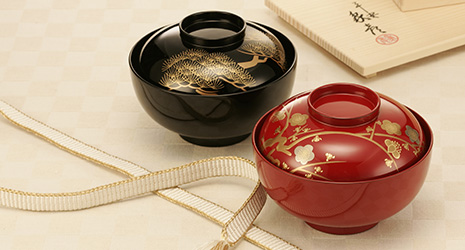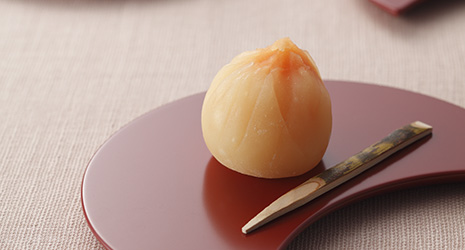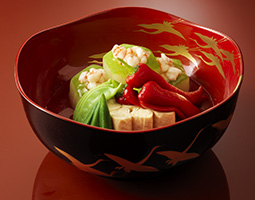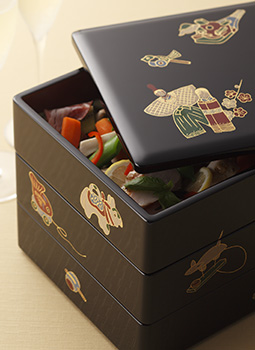May 2022
- English
- 日本語
Delicately Elegant Traditional Kyoto Lacquerware

Kyo lacquerware soup bowls 
A Kyo lacquerware plate for wagashi sweets

Kyoto cuisine served in Kyo lacquerware 
A three-tiered Kyo lacquerware box for food

There is a lacquerware establishment in Kyoto that has been creating tableware for Kyoto cuisine and tea ceremony utensils for over 360 years. We interviewed Nishimura Hikobei, the tenth-generation family head of Zohiko, about traditional Kyoto lacquerware.

Kyo (short for Kyoto) lacquerware is believed to have originated in the Kyoto area in the latter half of the eighth century. It was further refined and developed into a delicately elegant craft to respond to demand from aristocrats and Buddhist monks after the capital was moved from Nara to Kyoto in the year 794. Later, from the early modern period, tea masters with a keen sense of beauty drove the demand for Kyo lacquerware. The maki-e* technique for lacquerware surface decoration unique to Japan has continued to evolve in Kyoto.
Zohiko is a long-established Kyo lacquerware shop based in Kyoto City. Says tenth-generation family head Nishimura Hikobei, “When compared with lacquerware from other regions, Kyo lacquerware is distinguished by its delicacy, which is achieved through the application of multiple layers of lacquer over base wood** that has been sanded down to make it paper-thin. Its form is sharply defined yet has softly rounded edges, giving it a soft and gentle feel.”

Zohiko was founded in 1661. In the early nineteenth century, Nishimura Hikobei III received the title of “maki-e-tsukasa” (great master of maki-e) from the Imperial Court, and in his latter years created the maki-e panel Fugen Bodhisattva on a White Elephant***, which was highly acclaimed by the people of Kyoto. Since then, Zohiko has continued to pass down and refine its techniques through the generations, producing a wide variety of lacquerware ranging from Kyoto cuisine tableware and tea ceremony utensils to house fittings, supporting many different cultural traditions in Kyoto. In the twentieth century, after Hikobei VI exhibited the company’s wares at the World Expo in Chicago in 1893 and Hikobei VIII did likewise at the World Expo in Paris in 1925, demand from Europe and the United States increased, prompting the company to focus on making export pieces. Under Hikobei IX, Kyo lacquer was applied on the Imperial throne in the Seiden-Matsu-no-Ma (State Room) of the Imperial Palace in 1965.
Today, Zohiko produces not only high-end maki-e lacquerware, but also a wide range of tableware for everyday use to suit modern lifestyles, such as cups that can also be used for wine. In addition, the company is looking at new ways to collaborate with overseas manufacturers and designers, such as by applying a decorative maki-e finish to fountain pen shafts. Says Nishimura, “I believe that the true appeal of Kyo lacquerware lies in its ‘functional beauty’ together with its delicate elegance that has been refined through long history and tradition.”

Even today, many Kyoto families still continue the custom of serving special dishes during the New Year and other seasonal celebrations**** on lacquerware that has been carefully passed down from generation to generation. “Originally, maki-e patterns incorporated meanings and stories. Cranes, turtles, pine, bamboo, and plum were auspicious designs for special occasions, while seasonal scenes such as autumn foliage were for tea ceremonies. New lacquerware designs at Zohiko are always created with these Japanese cultural traditions in mind,” says Nishimura.
The beauty of Kyoto lacquerware reflects the depth of Kyoto’s long history and traditional culture.
* See here
** Bare wood before lacquer is applied to produce lacquerware
*** This led to the naming of the store, “Zohiko.” (Zo means elephant in Japanese.)
**** Days or annual events that mark the change of seasons


